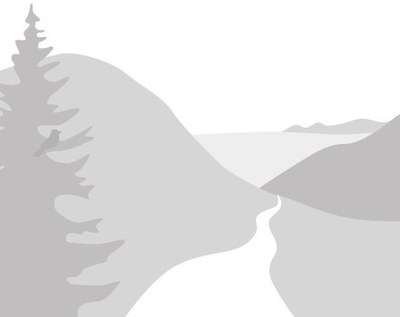
Trip Report
Alpine Scramble - Merchant Peak
8/6/2016: Good weather and a small but capable group (reduced in size due to illness and conflicting obligations) consisting of the leader, a Basic student, and a Scramble student enjoyed the generally solid rock in the main stream canyon, the cool overhang of the rock shelter, and the bounteous berries of the upper meadow. The broken cloud cover tempered the heat of the afternoon, as did refills of water in the pools of the side canyon's still-trickling stream. We saw a magnificent mountain goat (or rather, he took ten minutes out of his busy day to pose for us on a rock pinnacle), collected handfuls of mountain goat wool, and made it out in good time for refreshing drinks in Gold Bar!
- Sat, Aug 6, 2016
- Alpine Scramble - Merchant Peak
- Merchant Peak
- Scrambling
- Successful
- Road suitable for all vehicles
-
The road and trail are in good shape, the streams in the main and side canyons are still running, though there is no more snow in the upper basin to feed them. No significant hazards encountered, except for the ground wasps noted below.
Your dutiful reporter has led this trip ten-plus times, and I turned left/north up off the Barclay Trail at exactly the correct point. But somehow, in the course of chit-chatting about the local geology (the canyon and wash are full of beautiful swirl-patterned rocks, altered by metamorphosis from the original layered sedimentary strata) , I managed to divert us into some smaller side wash somewhere shortly above the trail, to the right or east of the prominent, wide, and open wash that leads directly to the main canyon. Of course, the further up this narrowing wash we went, the more obvious it became that I had led us astray. When scouting laterally east and west did not immediately lead us back to the correct wash, we chose to retreat back down through generally open forest. In the course of doing so, we disturbed a nest of ground wasps: the Basic student was stung twice and I was stung once. No one was allergic, so we just hustled out of wasp-Dodge as quickly as we could. Of course, as we descended back into the Barclay drainage, we intersected the correct wash just above the trail. After this re-set, we quickly gained the entrance to the main canyon, with its stunning views of Baring's overhanging north wall, where went around the first waterfall on the way-trail on climber's left. Between the top of this fall and the bottom of the next, we bouldered on plenty of excellent solid rock (most of which can be bypassed for those who insist on incurring loose rock and scree). The upper falls is passed on climber's right. There are a couple of additional pour-offs above this which can be negotiated in one manner or another, using care to stay on solid rock as much as possible. Then comes the only true T5 move of the route, a narrow notch on the left side of another apparent waterfall blockage, squeezed in between the south/climber's left wall of the canyon and a huge canyon-choking boulder. One of the enjoyable aspects of this route is how it remodels itself from trip to trip and season to season: you're in a steep active water/snow/avalanche gully, and new or relocated boulders, drifts of loose rock, and tree trunks are encountered on every trip. This particular crux has been getting more challenging, as more boulders accumulate in a stack of medium-sized chock stones between the wall and the ginormous boulder. The wall still offers plenty of hand- and foot-hold ledges, but some of them are beginning to weather and crumble, so care must be used. The exposure has increased: those with larger or more awkward packs may need to pass them up or down. The leader should consider offering the rope for reassurance (though we did not need it for this particular group). Otherwise, there are no real issues: there is some loose and dirty rock below the cave shelter, but skill and caution either avoid or manage the worst of it. Above the cave shelter, there is steep and loose dirt, again managed by closing up the party and sticking as close as possible to the base of the cliff. Once one emerges from this section of the route, it is possible to get into the rock of the side stream gully and stay there (avoiding bushwhacking and looser smaller gullies) all the way into the bottom of the upper meadows -- this may not always be possible in all snow and water-flow conditions, but it worked well on this trip. The mountain goat was seen from about halfway up the side gully, perched high on one of the sub-summit pinnacles to our north. Otherwise the trip was unremarkable: despite the cloud cover, we achieved expansive views from Glacier to Rainier; pumping water on the descent through the side canyon ameliorated any incipient dehydration issues. The students performed at a high level throughout, with virtually no significant instances of party-caused rock-fall. Rock helmets are a must for lengthy stretches of this trip; trekking poles are by and large useless and can become an active nuisance and danger.
 Stevie Russell
Stevie Russell